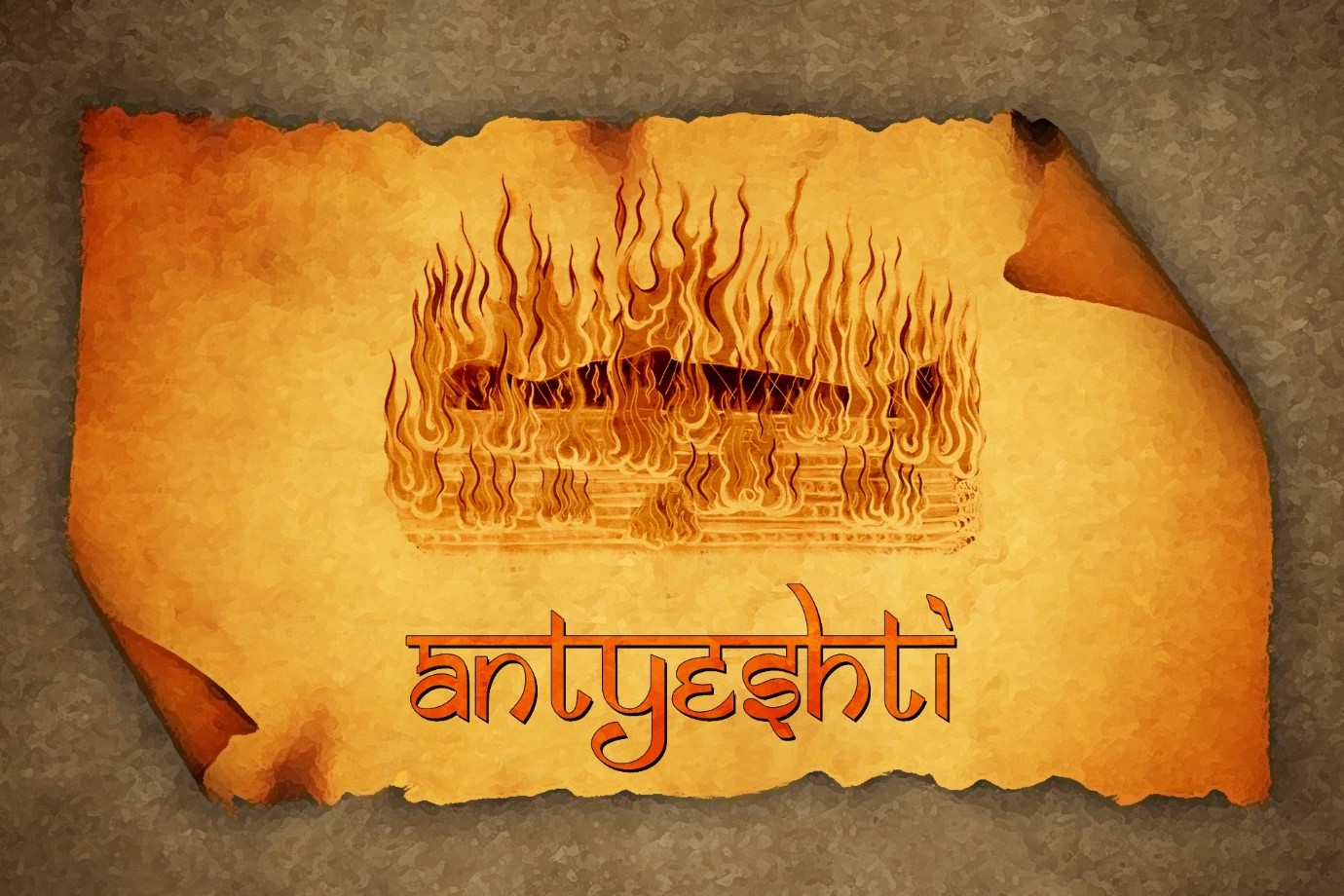Hindu scriptures and practices going back to the Vedic era provide for a Hindu life to be prepared and completed through 16 cardinal Sanskaaras. These are best performed through prescribed rituals by professional and duly educated priests and through social sanctity of family and friends. These provide the individual to sequentially recognize responsibilities/duties and pleasures at various stages of life and live a balanced life. These Sanskaras pave a pious path to remain in tune with the overall goal of human life of being a responsible citizen.
Sanskaaras, a Sanskrit word, literal meaning coming from the word ‘Samskarana’ i.e., filtration. meaning enhancement of good habits and discarding of bad ones which are coming from our previous birth. For hindus, particularly those living away from India, play a significant role in establishing hindu identity. These sacraments provide hindu values to a child as being raised among multiple cultures and receiving mixed messages about cardinal principles such as Faith on God, Body, Soul and Mind and their interrelationships. These are designed to be a bridge between vedic human goal (Dharma, Artha, Kama & Moksha) and this worldly goal.
16 Sacraments
Now most of Hindus follow these 16 sanskaras in the family environment.

-
Garbhadana (Conception):
This is the first Sanskar for a new soul taking life with hindu parents. A couple, when ready for progeny, prays to GOD and their ancestors for gifting them with a worthy descendent. The parents to be, at conception and thereafter, are guided to maintain peaceful and loving state of mind and the mother is advised to be watchful of taking healthy food, auspicious listening, see the things which are good to see.
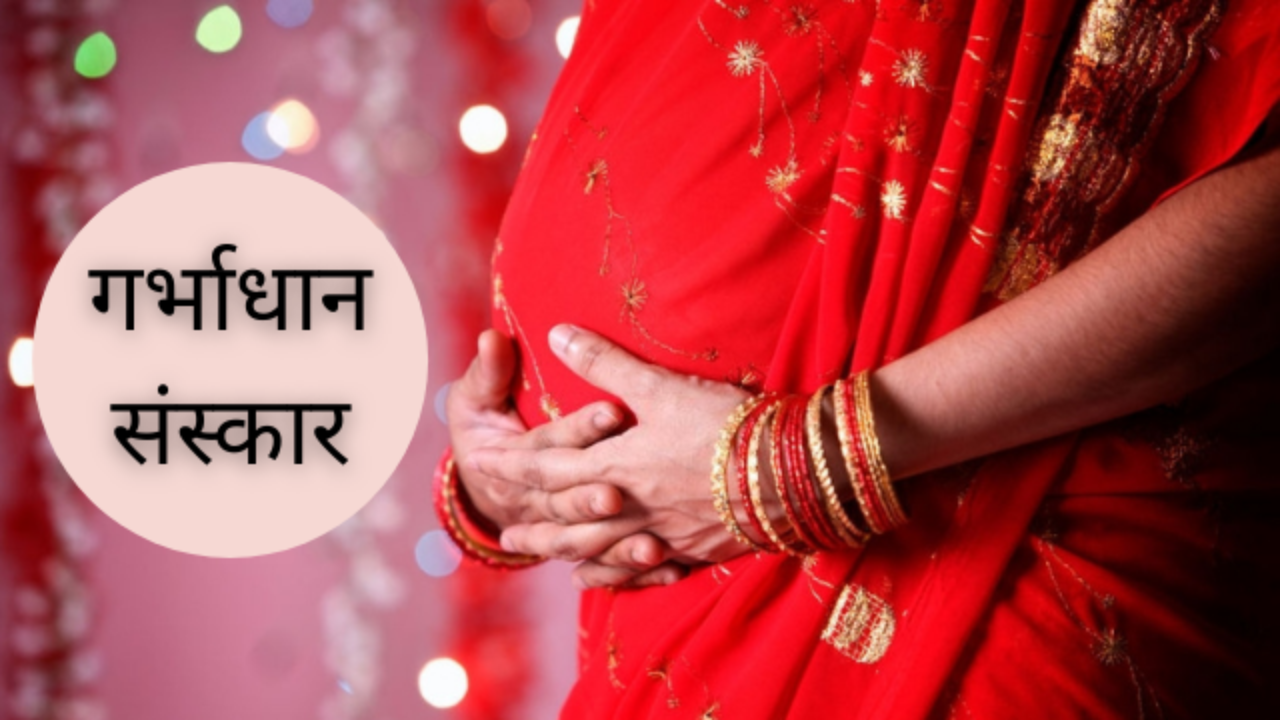
-
Pumsavana (Fetus protection):
This Sanskar is performed during three to four months of pregnancy to protect the new life growing in mother’s womb. The priest recites Vedic hymns to invoke divine qualities in the child. Family members are advised to pay extra care to the mother as she is sustaining a new life.
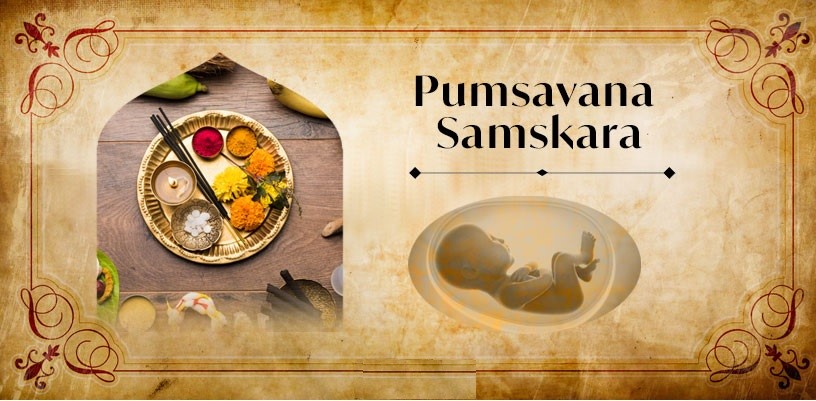
-
Seemanta (Satisfying the cravings of the pregnant mother):
This Sanskar is like a baby shower, performed during the seventh month of pregnancy when prayers are offered to God for the healthy physical and mental growth of the child. The mother is offered raw rice, variety of fruits and delicious foods by married ladies. Immediate Family is guided to provide utmost care to keep the mother happy.

-
Jatakarma (Child birth):
This Sanskar, traditionally observed immediately upon birth but considering the health of mother it is combined with Namakaran Sanskar described below.
-
Namakaran (Naming the child):
This ceremony is performed to announce the name of the child. The father whispers the name to the baby’s right ear. The name is identified with the help of a priest with calculation of Birth star (Nakshatra) and the position of the moon at the time of child’s birth. According to their home tradition this can be done on 11th or 21st or 31st day of birth of a child.
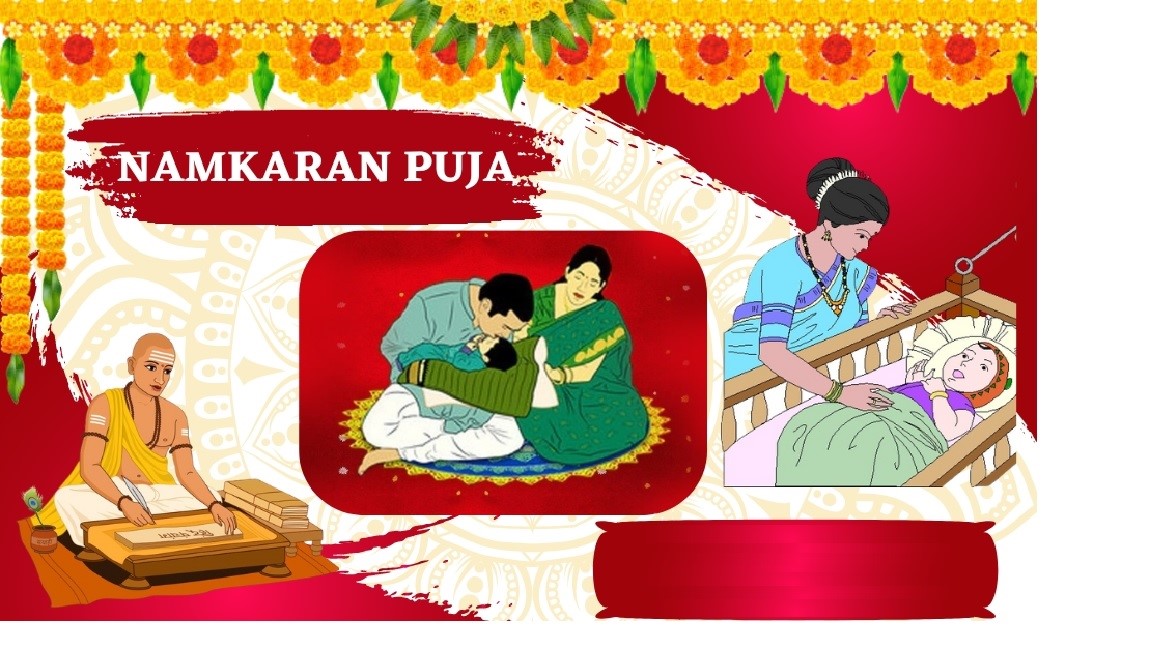
-
Nishkramana (Taking the child outdoors for the first time):
This Sanskar is performed on fortieth day from birth of the child. The child is taken outdoors and exposed to the sunlight. The sun is invoked to bless the child with wisdom and knowledge and to eradicate the darkness of thought.
-
Annaprasana (Giving solid food):
This Sanskar at six months of age, prescribes for the child to begin taking “Anna” This is also around the time of appearance of first tooth. First “Anna” is in form of sweet rice pudding. The ceremony is conducted in presence of priest and family members.
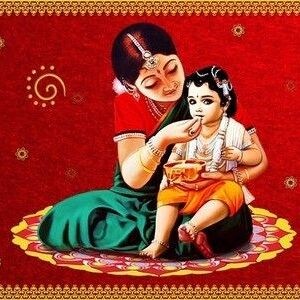
-
Khoura/Mundan (tonsure):
This Sanskar is performed when the child’s first hair is removed by shaving the head. Often, a tuft of the hair is left unshaved on the soft part of the head. This is also known as ‘Shikha’. Lord Brahma and Lord Prajapati is invoked during the process of tonsure. Some scriptures prescribe for the ceremony to be performed on an auspicious day after completion of one year. Sometime this rite is performed with Upanayana Sanskar.
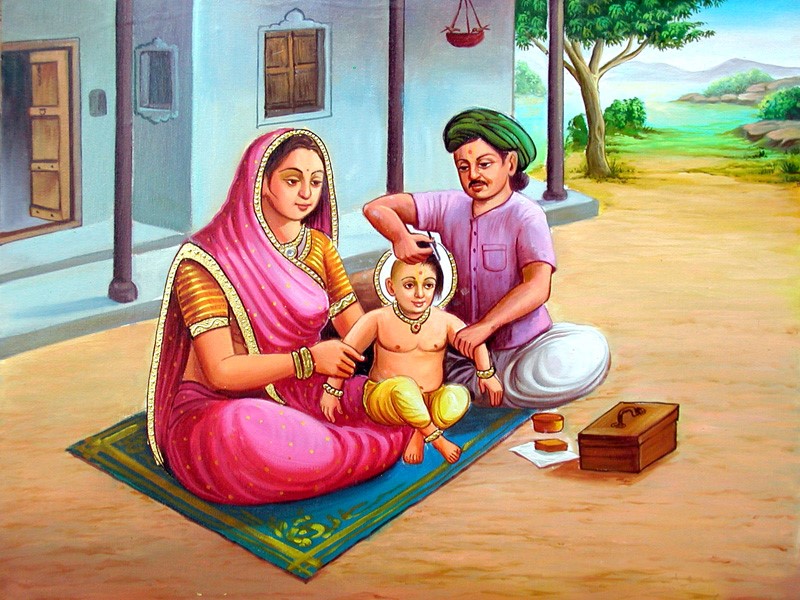
-
Karnavedha (Ear piercing):
This Sanskar involves piercing the child’s ear lobes during 3rd or 5th years of age (Katyayan Grihya Sootra) while the child’s skin is still soft. This involves Soorya worship by priest.

-
Upanayana (Sacred thread ceremony):
This ceremony performed at age of 7 to 15 years which initiates the child into an intellectual and spiritual journey. This becomes the second birth of the child. If the mother gives the first birth to a child, during this ceremony, the father or Guru initiates him by giving ‘Gayatri Upadesha’, this prayer for Buddhi is considered a second birth of the child. Gayatri Mantra is given to the child who promises to lead a good human life as per the rules of Dharmashastra. “Upanayana”, in Sanskrit etymologically means “the act of leading or perusing ahead”. because it introduces ‘the sacred vision’ or ‘new vision’, the vision to see things in a proper way and to know ‘wrong’ and ‘right’ to the brahmachari. Therefore, Upanayana is essential to handle household life. ‘Yagyopaveet’ (sacred thread) after wearing on child body indicates that the child is qualified to perform all the traditional Vedic rites including Pitra kriya and Tarpan for his forefathers.
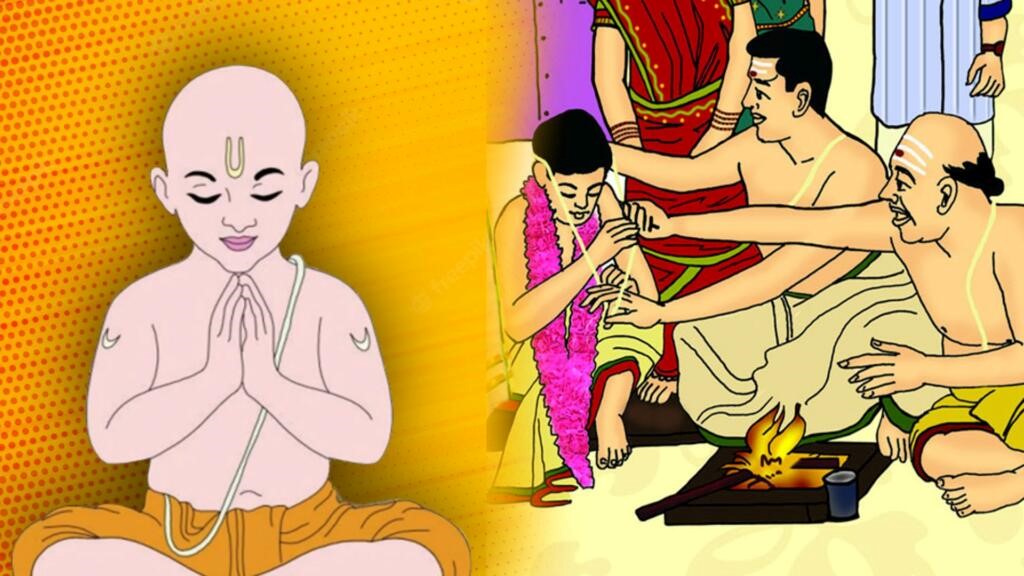
Since this day Brahmachari must wear three sacred threads on his body which symbolizes the three duties for three debts.
- Pitra: Debt of parents and ancestors,
- Manushya: Debt of society and humanity,
- Deva: Debt of Nature and God.
The Upanayana ceremony is undertaken under six different phases and are
Puja: worshipping the Gods and forefathers.
Havan/Homam: sacrifice,
Shiksha: teaching the morality and duties in life,
Bhiksha: begging as a renounced Brahmachari of Gurukul. Teacher’s teaching has made him renounced minded that he has accepted a life of Vairagya.
Diksha: giving the most sacred Gayatri Mantra to the child, and
Blessings: child will be blessed by all Gods, ancestors, and elders.
-
Vedarambha (Study of Vedas):
Its literary meaning is to “begin the study”. It is a milestone in in the life of a child as it introduces the child to the formal education. This rite allows a male child to accept the “Gurukulas” or the hermitage. The “Gurukulas” remains the home for the brahmacharis. Guru remains the only source of knowledge. The Guru teaches the scripts, vedas, the ethics and the logics for leading a peaceful life in future. Every study begins after invocation to Goddess Saraswati and God Ganesh.
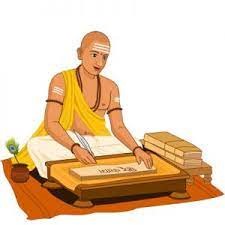
-
Samavartana (Returning home after completion of education):
This Sanskar is associated with the end of formal education and generally performed at the age of about 25 years. (Taking the ceremonial bath after finishing Vedic study and returning from the Gurukul/hermitage). Anybody completing the rites is the embodiment of knowledge and the icon of wisdom. The student desires to ask the teacher for any gift (Guru Dakshina) to which the student is indebted to pay over his lifetime. He is now eligible to enter into the householder stage and considered as an eligible bachelor sought of marriage.
-
Vivaha (Marriage):
Vivah, a sanskrit word, literally meaning acceptance of responsibilities between two through a specially prescribed process. The process is one of the major sanskaras, for a Hindu individual to enter into a lifelong commitment as a wife or husband. The wedding ceremony is solemnized in accordance with the ancient and sacred Hindu scriptures, the Vedas. It is performed by acknowledged Hindu priest(s) with the presence of the bride, the bridegroom, their respective families, relatives, and friends and Agni (Hindu deity of fire) invoked to be the divine witness. The priests chant the Vedic Mantras and guide the couple and the family through various steps to unite the wedding couple and the families for harmonious existence.
It is the strongest partnership established between a man and a woman, to progress toward progeny, wealth, health and spirituality.
Vivah Sanskar is done according to our own tradition and every household /community has their own style of doing. Normal steps involved the Vivah Sanskar is mentioned:
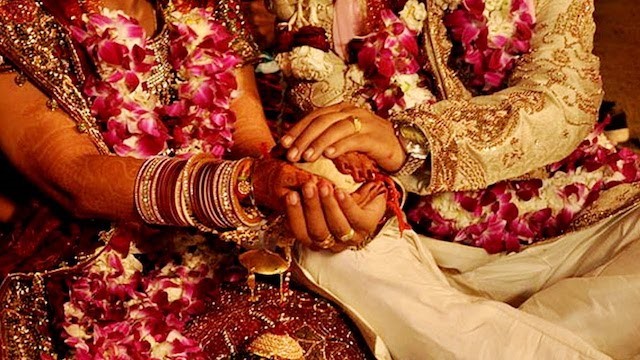
Baraat (Groom’s precession): The groom arrives with family and friends to the venue for the wedding. Music, dancing, and festivities by the party set the stage for the wedding events.

Milani: The parents of the bride greet and welcome the groom and his family at the entrance of the Venue. Kumkum (vermillion powder) is placed on the groom’s forehead for good luck and an Aarti (ritual involving oil lamps) is conducted by the bride’s mother. Groom’s parents and elders are recognized and welcomed by exchange of garlands and hugs. After the Milani, the groom and his family are escorted to the Mandap (altar) where the wedding takes place.
Ganesh Pooja-sankalp- Punyaha Vidhi: Escorted by bride’s brothers, cousins groom will be sit in the Mandap to do Ganesh Pooja, followed by Sankalp and Punyaha Vaachan vidhi along with the Priest. Now groom will get a ‘raksha’ from the priest.
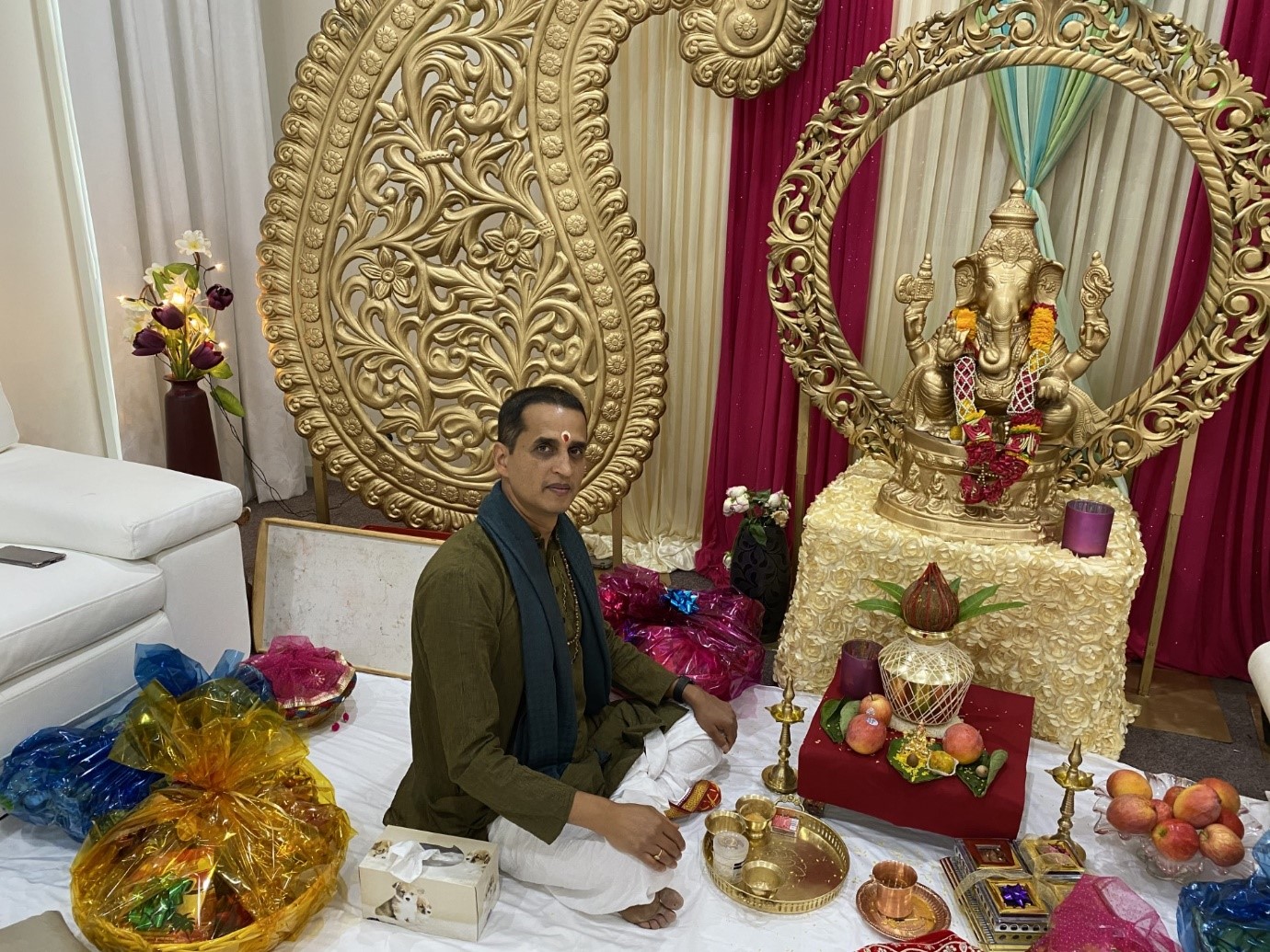
Madhupark: The bride’s parents offer Yogurt, Honey and Ghee to the groom as an expression of welcome and respect. The groom accepts the “Madhupark” graciously and promises to cultivate sweetness in all his dealings and speech.
Jai Mala (Garland Exchange):
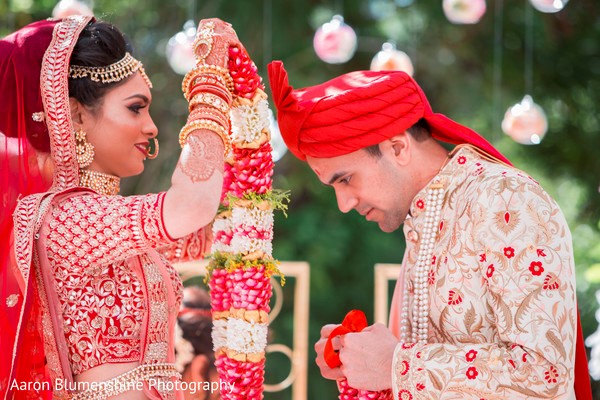
Escorted by her brothers, cousins, and friends, the bride is led to the Mandap where the bride and groom exchange floral garlands, signifying their acceptance, respect and love for one another.
Gotra Uchharan (Ancestral Recitation), Kanyadaan (Giving away the bride), and Granthi-bhandhan (tying the sacred knot):For Gotra-Uchharan, the priest(s) recites the family lineage of the bride and bridegroom. Upon Vedic chanting and worships invoking divinity in the bride and the bridegroom, the bride’s father hands over his daughter to the groom by placing her right hand into the right hand of the groom.
For Hast Milap, the palms of the bride and groom are joined as the priest recites Mantras.
Granthi bhandhan, the scarves worn by both the groom and bride are knotted by the groom’s mother, symbolizing the unity and her support. To assure each other and the families, the couple exchanges vows for a respectable, loving and harmonious life.
Vivaha Homa:

Agni is lit, and Devas(demigods) are invited through chanting by priest. Together, all constitute witnesses to the ceremony of commitment of the couple to one another.
Mangal Sutra, Sindoor, and/or Ring Exchange (Wedding Symbols): The groom tie the bride with a “Mangal Sootra” – a necklace of gold and black beads as a symbol of their marriage. He then places Sindhoor (red vermillion powder) at the parting of the bride’s hair signifying that she is now a married woman. Certain Families add the ceremonial ring Exchange which can be done at this time.
Laja Homa:

The bride’s brother pours puffed rice (Laja) into the bride’s hands. Bride shares the ‘Laja’ with the groom and together they offer the these to Agni symbolizing the brother’s continued support to the couple.
Agni Pradakshina (Circling the Fire God):
The couple circles the Agni four times, each circle representing the fulfillment of one of the four goals of their spiritual life. These are: Dharm (moral sense, responsibility, and duty), Arth (pursuit of wealth and fame), Kaam (pursuit of love and progeny), and Moksh (pursuit of knowledge of Self and Divinity). The first three circles are led by the bride; the last is led by the groom.
Halfway around, during last circle around Agni, the bride steps on a stone providing her commitment to remain steadfast in maintaining the values of the family. Here Groom put the toe ring to the bride.
Sapta Padi (The Seven Steps): The bridegroom holding bride’s hand takes seven steps; each step symbolizes a mutual value commitment.
- Commitment for joint decision-making the household & respect for elders,
- Commitments to grow; mentally and spiritually together,
- Commitment to increase the family wealth by righteous means and use it properly,
- Commitment for healthy, virtuous, honest, and brave generations of progeny,
- Commitment to acquire knowledge, happiness, and harmony,
- Commitment for self-restrain, longevity, and charity,
- Commitment for loyal companionship and understanding of self.
Poornahuti: the final offerings will be poured to the sacred fire and get the blessing of Agni dev.
Arundhati Darshan:
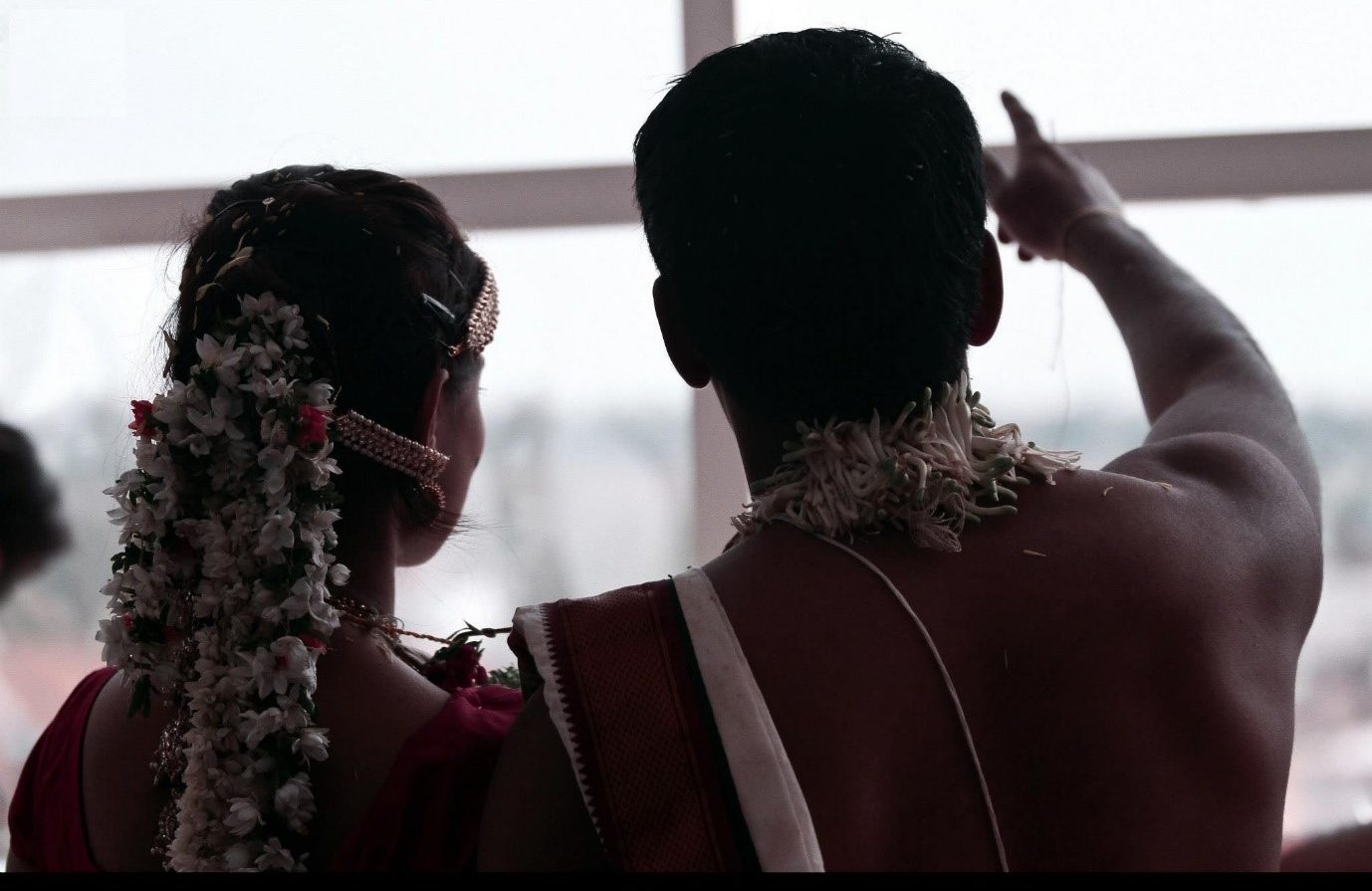
Couple come outside the venue where groom will show the Arundhati mandal to bride.
Arundhathi Darshana is the showing of the Saptha Rishi Mandala and the small star Arundhathi underneath the star of Vasishta.
These seven sages and their families are the originators of the Vedic Lore of the Hindus. In memoriam of these great sages the seven stars in the Great Bear constellation are named after them. The significance of this ritual is to remind the couple of the cosmic responsibilities they have to fulfill. Darshan of these Great Sages is intended to remind the couple the heritage they have to carry and the debt to the sages they have to pay. The secret of the twin stars.
In most twin stars system one star is stationary and other rotates around it, while Arundhati and Vashishtha both rotate in synchrony with each-other.
This is symbolic to what Hindu marriage wants the newly wed to learn that husband or the wife should not ‘dance to the tune’ of the other, instead a good marriage is where both are in perfect sync and harmony with each other. This also signifies that both the husband and the wife are given equal status in a Hindu Marriage.
It seems incredible and almost improbable that the Indian ancestors/scholars were aware of the existence of such stars existing and how they revolved around each other.
Offering of Sweet Among Newly Weds and their Immediate Family: The newlyweds and their respective parents offer a sweet to each other as a symbol of greeting and assuring each other of lasting sweetness in relationships.
Ashirvaad (Blessings): The couple seeks blessings from the Priest(s), the Parents and Elders for happiness, prosperity, and a long healthy married life.
-
Vanaprastha (Preparation for Renunciation):
As a Hindu approach age of 60 years Vanprastha, a voluntarily withdrawal from worldly activities is suggested by the scriptures. Scholars recommend this preparation for a man should be when a grandson has taken birth. Simpler lifestyle and focus on service to community and country are recommended. This is in preparation for Sanyasa, (complete renunciation of worldly matters), when the entire focus of an individual needs to be for spiritual progress and deeper appreciation for life.
-
Sannyasa (Renunciation):
Creation blesses everyone with a natural force that draws a person toward withdrawal from the world. As the body weakens and the experience of family and friends become saturated. all worldly desires are exhausted, and isolation becomes a joy.
16. Antyesthi (Final Rites and Cremation):
Upon death, this final Sanskar is performed by the progeny of the deceased Hindu. Depending on the age of the deceased, body is either buried or burnt (a young body of a baby, is typically buried whereas an adult body is cremated/burnt). Vedic scriptures provide that human body is made up of five natural elements. The main purpose of the cremation is to return the body back to nature and to the originating five elements.
